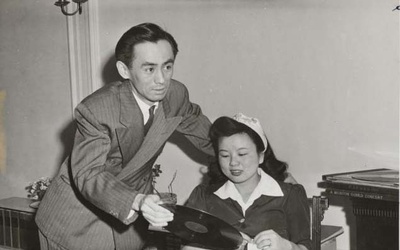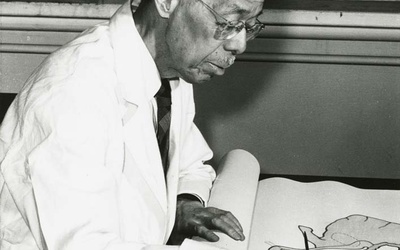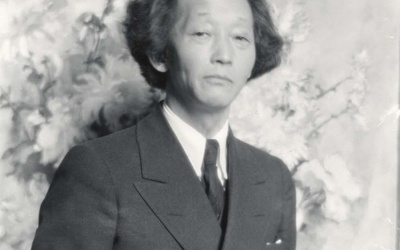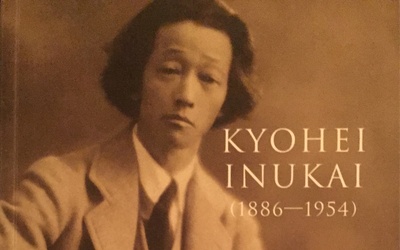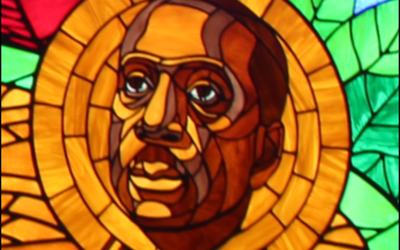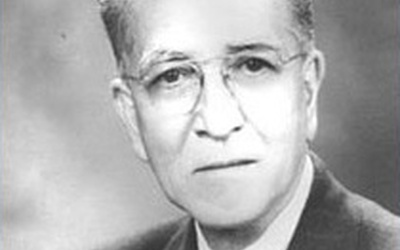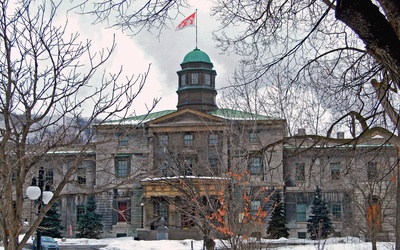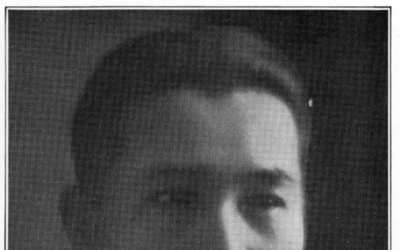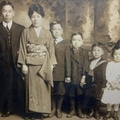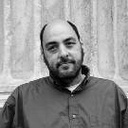
Greg Robinson
@GregGreg Robinson, a native New Yorker, is Professor of History at l'Université du Québec À Montréal, a French-language institution in Montreal, Canada. He is the author of the books By Order of the President: FDR and the Internment of Japanese Americans (Harvard University Press, 2001), A Tragedy of Democracy; Japanese Confinement in North America (Columbia University Press, 2009), After Camp: Portraits in Postwar Japanese Life and Politics (University of California Press, 2012), Pacific Citizens: Larry and Guyo Tajiri and Japanese American Journalism in the World War II Era (University of Illinois Press, 2012), and The Great Unknown: Japanese American Sketches (University Press of Colorado, 2016), as well as coeditor of the anthology Miné Okubo: Following Her Own Road (University of Washington Press, 2008). Robinson is also coeditor of the volume John Okada - The Life & Rediscovered Work of the Author of No-No Boy (University of Washington Press, 2018).
His historical column “The Great Unknown and the Unknown Great,” is a well-known feature of the Nichi Bei Weekly newspaper. Robinson’s latest book is an anthology of his Nichi Bei columns and stories published on Discover Nikkei, The Unsung Great: Portraits of Extraordinary Japanese Americans (University of Washington Press, 2020). It was recognized with an Association for Asian American Studies Book Award for Outstanding Achievement in History Honorable Mention in 2022. He can be reached at robinson.greg@uqam.ca.
Updated March 2022
Stories from This Author
Toge Fujihira: Master Photographer and World Traveler - Part 1
Sept. 27, 2021 • Greg Robinson , Jonathan van Harmelen
Toge Fujihira (whose family name was sometimes reported as Fujihara) left the West Coast in the years before World War II and settled in New York, where he distinguished himself as a photographer and documentary filmmaker. During the postwar era, he established himself as a professional cameraman and photographer, capturing prize-winning photos and films of landscapes and people in the United States and around the world. Toge Fujihira was born Kazuo Togo Fujihira in Seattle, Washington on January 18, 1915, …
The N-Word and the Japanese American Press
Aug. 23, 2021 • Jonathan van Harmelen , Greg Robinson
In the wide world of American racial epithets, one word seems to stand apart as uniquely hateful and wounding: the term euphemized as the “N-word.” Applied to African Americans, it is a corruption of the term Negro—a term that has gone through its own complex history. Like the Nazi swastika, the Confederate flag, or the flaming cross, the “N-word” represents such a toxic symbol of prejudice that even neutral utterance of it, especially by nonblacks, is taboo. (There are hate …
Kenji Toda: Groundbreaking Artist and Scholar
Aug. 3, 2021 • Greg Robinson
Not long ago I did a Discover Nikkei piece on the artist Bunji Tagawa, who made a career of scientific drawing for Scientific American, and who was lauded for the artistry of his technical work. I later discovered that Tagawa was preceded in the field by another prodigious Japanese artist-turned-scientific illustrator, Kenji Toda. Toda worked as staff artist in the Department of Zoology at the University of Chicago for 56 years, during which time he did thousands of drawings for …
A Family of Artists - Part 2: The Goodenow Brothers Make Their Own Marks
July 8, 2021 • Greg Robinson
Read Part 1 >> Although their father Kyohei Inukai achieved the greatest renown as an artist, the brothers Julian, Girard and Earle Goodenow sons took their family name and their chief support from their mother Lucene. After separating from Kyohei Inukai, Lucene moved with the three boys to Philadelphia, where she worked briefly as a magazine writer, then settled in Battle Creek, Michigan by 1921. In 1925 she married Col. Lucien Taliaferro, a retired army officer, and settled in Connecticut. …
A Family of Artists - Part 1: Kyohei Inukai, Society Portraitist
July 7, 2021 • Greg Robinson
One remarkable clan of artists is that of the Inukai-Goodenow family. It was formed by Kyōhei Inukai, a Japanese immigrant who became a popular society portrait painter (and fencing enthusiast) in 1920s New York, and his first wife Lucene Goodenow, a writer, painter and sculptor. Their three sons, who were raised under their mother’s family name, would take up careers as artists and designers in midcentury America. Much of what sketchy information is available about Kyōhei Inukai comes from his …
Howard Thurman and Japanese Americans - Part 2
June 3, 2021 • Greg Robinson , Peter Eisenstadt
Read Part 1 >> It was as co-pastor of the Fellowship Church that Howard Thurman made his greatest contribution to working with Japanese Americans. As mentioned previously, it was in 1944 that Thurman was invited to join a white minister, Alfred Fisk, as co-pastor of the new church, which was one of the first churches in the United States organized on an intentionally interracial and interreligious basis. The assignment was sufficiently noteworthy that, on his departure from Howard in May …
Howard Thurman and Japanese Americans - Part 1
June 2, 2021 • Greg Robinson , Peter Eisenstadt
During the early 1940s, Howard Thurman, a noted orator and writer, was dean of chapel and professor of religion at Howard University, a historically Black university in Washington DC. He usually spent his summers on the road, traveling to conference centers, retreats, and churches. Despite the wartime conditions, the summer of 1942 was no different. That July, his journeys took him as far west as California, where he attended a 10-day Race Relations institute at Whittier College. During that trip, …
Kinjiro Matsudaira: Mayor of Edmonston, Maryland
May 5, 2021 • Greg Robinson , Jonathan van Harmelen
In the pre-World War II years, mainland Japanese Americans were all but absent from electoral office. Whereas in Hawaii there were Nisei representatives in the Territorial Assembly and even a Senator, Sanji Abe, those living elsewhere found endemic anti-Japanese prejudice an effective barrier to even running for elected office, though a few West Coast Nisei such as Clarence Arai and Karl Yoneda launched campaigns. After World War II, a wave of Japanese American politicians rose to prominence as part of …
‘One mistaken and semi-Fascist regulation’ : The Debate over McGill University’s Wartime Exclusion of Japanese Canadians
April 6, 2021 • Greg Robinson
One remarkable story that comes out of the wartime removal and dispossession of Japanese Canadians is that of their exclusion at McGill University. In fall 1944, McGill, the historic university in Montreal, became the first Canadian institution of higher education officially to close its doors to Japanese Canadian students. Its action sparked widespread opposition, and led to the first visible public protest during the wartime period by non-Japanese Canadians on behalf of the citizenship rights of the Nisei. (While Tess …
Laying Down the Law of Love: The 1936 American Tour of Toyohiko Kagawa
March 12, 2021 • Greg Robinson , Bo Tao
It was the middle of December 1935. The Nippon Yusen liner Asama Maru had just concluded a fourteen-day voyage. After leaving Yokohama and stopping at a port of call in Honolulu, it arrived in San Francisco. As Asama Maru sailed into San Francisco Bay, its 800 passengers looked on, no doubt thinking of the ventures and reunions that lay ahead. Among the crowd on deck was a 47 year-old Japanese man whose entry into the United States was unexpectedly halted. …


